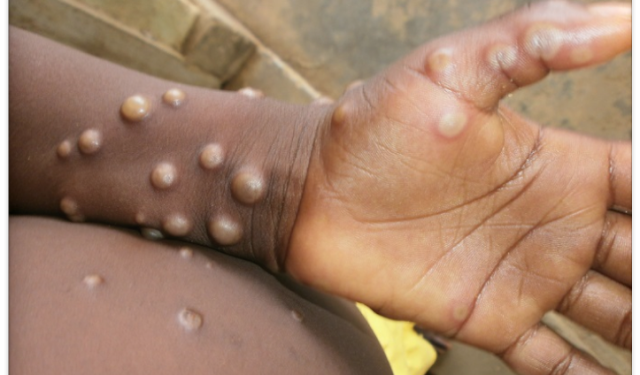As Mpox (formerly “monkeypox”) cases climb across West Africa and beyond, Ghana finds itself at a pivotal moment for outbreak control.
Once confined to remote regions of Central and West Africa, clade II mpox has, since early 2022, spread to over 120 countries, many of them previously unaffected resulting in more than 100,000 reported infections.
At present, Ghana has confirmed 85 mpox cases, 40 of which were reported in recent weeks.
Faced with rising transmissions and the risk of more severe viral evolution, it is imperative that our response rest on solid clinical tools, robust surveillance, and equitable access to therapeutics.
In the early days, the name ‘monkeypox’ ultimately hindered surveillance and clinical response: the stigma it carried led to the indiscriminate culling of monkeys in some African regions under the mistaken belief that they were the primary vectors of virus transmission.
Mpox is an orthopoxvirus, a family best known for smallpox. While smallpox carried a mortality rate exceeding 30 percent, mpox infection is generally less lethal, yet still capable of severe illness particularly in immunocompromised individuals and the elderly.
Clinically, mpox rash lesions can mimic those of varicella-zoster, herpes simplex, or secondary syphilis, often delaying accurate diagnosis.
Historically a zoonotic spillover infection, mpox’s person-to-person spread in the current global outbreak underscores the need for heightened clinical vigilance and laboratory confirmation.
This reality hones the question for Ghana’s health service: ‘treatment is imperative—but with what?’.
To date, management of mpox has largely relied on supportive care and off-label use of antivirals, yet, reliance on reference-lab PCR rather than true point-of-care testing or self-testing (home or “over-the-counter” test kits) adds a 1–3-day diagnostic lag, eroding the early-start advantage of antiviral therapies, which delivers its greatest benefit when initiated within roughly 48–96 hours of rash onset.
With the possibility of viral adaptation through continued human-to-human transmission, proactive deployment of an approved, targeted antiviral is the best strategy to reduce morbidity and curb outbreaks.
Tecovirimat, developed in the early 2000s and approved for orthopoxvirus infections has emerged as the leading candidate.
The drug inhibits the orthopox p37 envelope protein, blocking viral egress from infected cells and halting further spread. Pivotal animal studies in non-human primates and rabbits demonstrated substantial reductions in mortality and viral loads when treatment began soon after infection.
Importantly, recent human phase 1 trials involving over 800 healthy volunteers (including a repeat-dose pharmacokinetic study in Japan) confirmed the drug’s favorable safety profile and predictable absorption at therapeutic doses.
The drug is now registered in the United States, European Union, UK, Canada, and several other high-income countries for smallpox, mpox, cowpox, and for complications following smallpox vaccination.
Earlier this year, Japan authorized tecovirimat for both adult and pediatric patients (≥ 13 kg), mainly to reinforce its national orthopoxvirus stockpile using clinical pharmacology and animal-efficacy data, a step that may still catalyze wider access in low- and middle-income countries.
Originally synthesized via a Diels–Alder reaction between cycloheptatriene and maleic anhydride, tecovirimat’s early manufacturing faced hurdles such as low yields, diastereoselectivity issues, and scarce starting materials.
Thus, producing tecovirimat at scale has historically been complex, particularly due to difficulties in synthesizing its key starting material, cycloheptatriene. Recent innovative advances spearheaded by Vigonvita Life Sciences in collaboration with the Shanghai Institute of Materia Medica have streamlined production.
Their four-step, novel reactive-distillation process safely generates high-purity cycloheptatriene at scale, enabling sustainable production of multi-kilogram batches of the Active pharmaceutical ingredient and several doses of the generic capsules suitable for clinical investigations (see: Org. Process Res. Dev. 2023, 27, 11, 1984–1991).
The resulting production process is under regulatory review in China, with generic capsule formulations available to support clinical investigations. This progress is critical for ensuring drug accessibility, particularly in low- and middle-income countries.
Ghana’s growing mpox caseload demands urgent action: although tecovirimat is not yet widely available, if being pursued through procurement initiatives for stockpiling and enrollment in the STOMP trial, which examines optimal dosing regimens across diverse populations will directly inform national treatment guidelines, help establish a standardized care protocol, and broaden access.
Early antiviral intervention is expected to shorten hospital stays, limit transmission, and save lives.
Concurrently, the Ghana Health Service’s effort to secure vaccines for clearly defined high-risk groups is commendable, and will strengthen the country’s preventive and control efforts.
Mpox should serve as a stark reminder that emerging zoonotic viruses are not a bygone threat.
As Ghana grapples with its own mpox surge, we must leverage all available tools, strengthen surveillance, rapid diagnostics, supportive care, and, critically, targeted antivirals like tecovirimat. Collaboration among public health authorities, clinical researchers, and pharmaceutical partners will ensure that this promising drug reaches those at highest risk. With timely treatment, robust surveillance, and community engagement, we can contain mpox’s spread and protect Ghana’s most vulnerable.
(The writer is a Researcher in the field of Medicinal Chemistry & Drug Development)
Email: emmanuel.bonku@mails.ucas.ac.cn || WhatsApp: +233247645270













